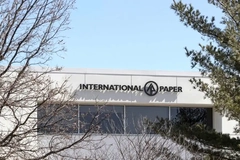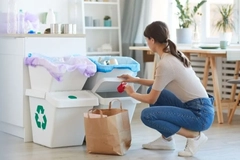Pack Expo 2024 review: Pharmaceutical packaging takes center stage amid labor shortages and automation developments
This year’s Pack Expo in Chicago, US (November 3–6), almost 48,000 attendees visited over 2,700 packaging companies in what was the industry’s biggest trade show globally. Medical packaging was a major theme, with numerous companies showcasing their latest product designs and production machinery, and highlighting the challenges in advancing pharmaceutical packaging amid workforce shortages and impending legislation.
According to the US Chamber of Commerce, more than 50 million workers quit their jobs in 2022, following 47.8 million who did so in 2021. In 2023, another 30.5 million workers resigned by August. These trends have impacted manufacturing throughout the country and driven the demand for automation and AI-based production solutions.
At the same time, incoming legislation against plastics, including the introduction of extended producer responsibility (EPR) schemes, as well as consumer pressure, is driving packagers to look for new materials and methods for their products.
In the medical packaging segment, these pressures are especially high.
“When you talk about medical products, people literally trust those products to save lives. Packaging is an afterthought, for those markets it’s historically been solely to eradicate risk. But now we’re looking at how to do this in a sustainable way,” says Zach Muscato, sustainability leader at Plastic Ingenuity.
“You can have packaging made from the most sustainable material in the world, but if it doesn’t protect the product, it’s not sustainable.”
Christopher Dale, executive director of public relations of Turchette, says: “It’s always going to be challenging for pharma packaging to match the sustainability levels of other segments like F&B. There can be absolutely no sacrificing of quality when you’re dealing with drugs.”
“A base up push for further sustainability. Our recycling stream in the US is very inferior to the UK or EU. The pressure on companies to innovate sustainability is real, while patient safety and product efficacy demands remain paramount,” he says.
US advancements
Plastic Ingenuity products on display.Tom McDaniel, president for Pro Mach Pharma Solutions, a global company producing packaging for all of the world’s top 20 pharmaceutical companies, says that the documentation and validation requirements around medical packaging are unique because they serve such a regulated industry.
“Our customers are looking more and more for sustainable materials. So, what we’re doing is working with them. We’re doing a lot of testing with sustainable materials to support and complement those requirements,” he says.
More flexibility is required to slash footprints, McDaniel asserts. “I think it’s more accelerated in the US because this is where a lot of the biopharmaceutical R&D and drug development is. And those are the type of products that are really driving that small batch, smaller footprint and higher flexibility.”
“The other thing I would say is the US market has a little bit of higher expectation regarding responsiveness and service. I do have a fair amount of experience with the global market, and they all require customer support and customer service and responsiveness.”
“But in my opinion, the US market customers have a higher level of expectation,” adds McDaniel.
Improving product design
To meet high customer expectations, companies like Plastic Ingenuity are finding ways to improve design while reducing material usage and recyclability simultaneously.
“As a custom producer, we can communicate with each customer and determine what is most appropriate on a case by case basis. We have a large market share for the healthcare packaging industry. We’re the number one custom thermoformer in North America. Often people think customization means small scale, but that isn’t the case,” Muscato says.
Meanwhile, Melissa Green, head of global marketing at TekniPlex Healthcare, highlights the company’s new reinforced paper for sterile packaging, which she says is the toughest paper to date.
“We have a lot of applications in pharmaceuticals that must meet moisture and shelf life requirements that differ for F&B, so there are differences. Drugs continue to be more moisture sensitive, so we have to find new material ways to reduce emissions while never sacrificing on performance.”
Medical packaging has higher requirements, particularly surrounding moisture resistance.TekniPlex Healthcare was also showcasing new recyclable blister packaging — something Dale also notes is a big area of innovation for healthcare.
Tackling labor shortages
Automation is helping support the labor shortages companies are facing and reducing costs previously incurred by unreliable and often excessive manpower, McDaniel notes. It is also helping improve supply chain processes.
“Probably one of the biggest changes is the shift from higher volume, higher speed productions, more of what I used to call the blockbuster model, to much smaller footprint, more flexibility, faster changeover,” he explains.
“Our customers are looking for that level of flexibility because they have smaller batch sizes now and they don't necessarily know what’s around the corner. They don’t know what the requirements are going to be next quarter, next year. So, really looking for that level of flexibility for today and looking forward.”
“Our machines are fairly low impact as they are,” he continues. “They utilize electricity and, in some cases, compressed air. But there’s not significant savings there compared to the standard current level of usage. So, the focus is more on materials and commodities and how to reduce waste and drive the ability to recycle and reuse the materials.”
Legislation
While in some areas the US market is more demanding, European sustainability regulations are comparatively tighter, according to Green. If legislation is altered, the industry will react appropriately. “From a policy perspective, the more we’re pushed, the more we innovate,” she says.
McDaniels says that policy changes in the US, following the election, could begin to have a gradual impact. While he doesn’t anticipate a big or immediate change, dependence on foreign manufacturing is becoming a bigger issue.
“There’s some legislation that was pending prior to try to reduce the dependency on active pharmaceutical ingredient manufacturing. Right now, most of that is outsourced to Asia-Pacific. During COVID-19, that sparked some concerns about supply chain and supply chain timing and supply chain dependence,” he explains.
“I think there has been and there will continue to be some gradual change of that dependence, and I think there’ll be more and more North American manufacturing. I don’t think it will be significant in the short term, but I think over the medium term, we’ll see more of that additional investment and capacity in North America.”
While developments might be slow and legislative pressure gradual, all stakeholders at the event indicated industry progress.
“I think pharmaceutical packaging is moving along well — it’s a success story in the making that doesn’t have a happy ending yet, but it’s going that way,” Dale concludes.











